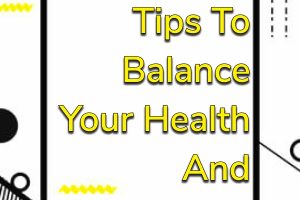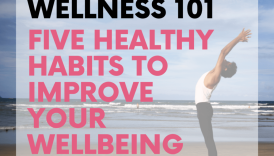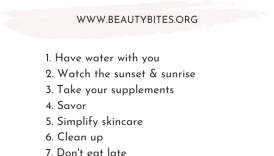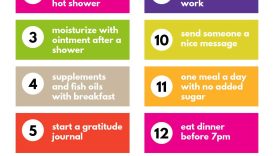Achieving Balance: The Key to Healthy Living and Fitness

Understanding the Importance of Balance
Achieving a healthy lifestyle is often about more than just eating well or exercising consistently; it is fundamentally about balance. A balanced approach to nutrition, exercise, mental well-being, and personal life helps maintain harmony in various aspects of life. Consider Maria, a busy professional and a mother of two. In her quest to lead a healthier lifestyle, she overcommitted to extreme diets and rigorous workout regimens. While she succeeded temporarily, she soon felt drained and burnt out, realizing that what she needed was not more intensity but rather a balanced approach. Incorporating nutritious meals and moderate exercise while allowing time for family and personal interests transformed her experience. Maria learned firsthand that balance is not a one-size-fits-all solution but a dynamic process tailored to individual needs. Key benefits of maintaining balance include:
- Achieving Balance: The Key to Healthy Living and Fitness
- Understanding the Importance of Balance
- Common Misconceptions about Healthy Living
- Balancing Nutrition
- Mindful Eating Habits
- Incorporating Variety in Your Diet
- Achieving Balance through Exercise
- Finding the Right Workout Routine
- Importance of Rest and Recovery
- Mental Well-being and Balance
- Managing Stress Levels
- Practicing Mindfulness and Meditation
- Balancing Work and Personal Life
- Time Management Strategies
- Setting Boundaries for a Healthy Work-Life Balance
- Enhanced Physical Health: A well-rounded diet and regular exercise support overall health.
- Mental Clarity: Balance can lead to improved focus and productivity.
- Emotional Stability: Harmonizing various life aspects helps reduce stress levels.
Common Misconceptions about Healthy Living
Navigating the journey towards a balanced lifestyle is often marred by misconceptions that can deter individuals from achieving their health goals. One common belief is that healthy living requires extreme dietary restrictions or exhaustive workout plans. In reality, moderation is key. Here are some misconceptions to consider:
- Myth 1: “Healthy eating means avoiding all fats.” Truth: Healthy fats, like those found in avocados and nuts, are crucial for overall well-being.
- Myth 2: “You must spend hours at the gym to be fit.” Truth: Short, high-intensity workouts can be as effective as long sessions.
- Myth 3: “Healthy living is a strict regimen.” Truth: Balance allows for indulgence, fostering sustainability in healthy habits.
By dispelling these myths and embracing balance, individuals can create a fulfilling and enjoyable healthy lifestyle that is realistic and attainable. The journey to a balanced life is ongoing and evolving, enabling a richer experience and a more satisfying path to wellness.
Balancing Nutrition
Mindful Eating Habits
Transitioning into the realm of nutrition, one of the most impactful approaches is mindful eating. This practice involves being present during meals, savoring each bite, and tuning into the body’s hunger and fullness cues. Often, people eat on autopilot—working through lunch at their desks or mindlessly munching while binge-watching a favorite show. Consider James, a tech-savvy individual who always scarfed down his lunch in under ten minutes at his desk. One day, he decided to step away from his computer and eat mindfully. By focusing on his food, chewing slowly, and appreciating the flavors, James found he enjoyed his meals more and felt satisfied with less. His experience highlights how taking the time to eat thoughtfully can lead to:
- Better Digestion: Chewing more thoroughly aids digestion.
- Satisfaction: Enjoying meals can reduce the desire to snack unnecessarily.
- Awareness: Being attuned to hunger signals helps prevent overeating.
Incorporating Variety in Your Diet
Another vital aspect of balancing nutrition is incorporating variety in your diet. Eating a diverse range of foods ensures that you not only enjoy your meals but also receive a broad spectrum of nutrients. For many, the daily routine becomes monotonous—think repeat meals each week. To break the cycle, it can be helpful to explore new recipes or ingredients. Here are some practical tips to add variety:
- Try a new vegetable or fruit each week: Visit a farmer’s market or a local grocery store and pick something unfamiliar.
- Experiment with different cuisines: Cooking Indian, Mediterranean, or Asian meals introduces new flavors and ingredients into your diet.
- Meal prep with themes: Each week, you might stick to themes like “Meatless Monday” or “Taco Tuesday” to try new recipes.
By mixing things up in the kitchen, individuals can experience the joy of discovery, enhance their meals, and improve their overall health. Balancing nutrition is not solely about restrictions; it invites creativity and excitement into everyday eating habits, making healthy living genuinely enjoyable.
Achieving Balance through Exercise
Finding the Right Workout Routine
As we move forward in our exploration of balance, let’s delve into the realm of exercise. Finding the right workout routine is crucial for cultivating physical health while also fitting seamlessly into your lifestyle. Not every workout suits every individual, and that’s perfectly okay. Take Sarah, for instance; she hit the gym every morning, following a high-intensity training program tailored for bodybuilders. Initially, she relished the challenges, but soon found herself feeling fatigued and disenchanted. After some introspection, Sarah decided to experiment with various activities, like yoga, jogging, and dance classes. Now, she incorporates a mix of strength training, flexibility exercises, and cardio into her week. This diversity not only keeps her engaged but also supports her overall well-being. To find your ideal workout routine, consider the following:
- Identify Your Interests: Enjoy swimming or dancing? Include those in your plan!
- Set Realistic Goals: Start small, and gradually build up to more challenging routines.
- Listen to Your Body: If a workout feels wrong, modify it or try something else.
Importance of Rest and Recovery
While it’s tempting to think that more exercise means quicker results, it’s equally important to recognize the value of rest and recovery. Overtraining can lead to burnout and injuries, undermining your efforts. For example, Mike, who was driven by a goal to run a marathon, neglected recovery days, dismissing them as unnecessary. He soon found himself sidelined with shin splints. After consulting a coach, he learned the importance of incorporating rest days into his routine. Not only did this boost his performance, but it also improved his overall mood and motivation. Here are key reasons why rest and recovery matter:
- Muscle Repair: Muscles need time to rebuild and strengthen after workouts.
- Injury Prevention: Proper recovery reduces the risk of overuse injuries.
- Mental Resilience: Taking breaks can reinvigorate your enthusiasm for exercising.
Achieving balance through exercise is not merely about how hard or frequently you train. It encompasses finding what works best for your body while recognizing the significance of recovery. By honing in on the right routine and appreciating rest, anyone can enjoy the holistic benefits of a balanced fitness journey.
Mental Well-being and Balance
Managing Stress Levels
Transitioning from the physical aspects of balance into mental well-being reveals a critical component of a healthy lifestyle: managing stress levels. In today’s fast-paced world, stress can feel unavoidable, engulfing both personal and professional lives. However, it’s essential to address and manage stress effectively to maintain a balanced life. Take Lisa, a dedicated corporate employee who often found herself overwhelmed by deadlines and responsibilities. She noticed that her stress led to fatigue and decreased productivity. To counter this, she started to employ various stress-management techniques. Some effective strategies include:
- Regular Breaks: Lisa began incorporating short breaks throughout her workday. This simple practice allowed her to recharge and maintain focus.
- Physical Activity: Whether a brisk walk or a quick workout, Lisa discovered that exercise significantly reduced her stress levels.
- Open Communication: Sharing her workload and discussing challenges with colleagues helped her feel supported and alleviated pressure.
By actively managing her stress, Lisa found a renewed sense of control and productivity.
Practicing Mindfulness and Meditation
Integral to balancing mental health is the practice of mindfulness and meditation. These techniques encourage individuals to stay grounded and present in the moment, which can greatly alleviate stress and enhance mental clarity. For example, consider David, who often felt scattered amidst various commitments. After learning about mindfulness, he decided to dedicate just five minutes daily to meditation. By focusing on his breath and observing his thoughts without judgment, he cultivated a newfound sense of calm. Here are some ways to incorporate mindfulness and meditation into daily routines:
- Start Small: Even a few minutes of daily meditation can yield benefits.
- Mindful Moments: Engage in everyday activities—like eating or walking—mindfully. Pay attention to the sensations and experiences.
- Apps and Resources: Utilize meditation apps or online resources to guide practice and provide structure.
Practicing mindfulness and meditation not only fosters mental well-being but also complements stress management techniques. Together, these practices form a solid foundation for achieving balance in life, promoting resilience and emotional stability. By nurturing mental health, individuals can pursue their wellness journeys with clarity and joy.
Balancing Work and Personal Life
Time Management Strategies
As we delve into the realm of work and personal life balance, effective time management emerges as a cornerstone of achieving harmony. Many people find themselves overwhelmed by endless to-do lists, but with the right strategies, it’s possible to regain control and enhance productivity. Take Tom, for instance. A project manager juggling numerous deadlines and family commitments, he often felt as if he was living at the office. After feeling the tension of burnout, Tom decided to overhaul his approach to time management. Here are some strategies that helped him, and can help others as well:
- Prioritization: Tom began listing tasks using the Eisenhower Matrix, categorizing them by urgency and importance. This helped him focus on high-impact activities.
- The Pomodoro Technique: By working in focused 25-minute bursts followed by short breaks, Tom not only maintained concentration but also avoided fatigue.
- Weekly Planning: Every Sunday, he would outline his goals for the week, both personal and professional. This proactive approach gave him a clear roadmap and decreased his anxiety.
Through these strategies, Tom discovered a more balanced and fulfilling routine.
Setting Boundaries for a Healthy Work-Life Balance
In addition to effective time management, setting boundaries is vital for maintaining a healthy work-life balance. Without clear boundaries, work can easily spill into personal time, creating feelings of guilt or stress. Consider Sarah, a dedicated marketing executive who often answered work emails late into the night. Realizing this habit was draining her personal time, she decided to establish firm boundaries. Here’s how she did it:
- Designated Work Hours: Sarah committed to logging off at a specific time each day, allowing her to concentrate fully on her family and hobbies afterward.
- Technology Breaks: She turned off work notifications during non-work hours, which helped her separate work from home life.
- Communicating Boundaries: By discussing her boundaries with her team, Sarah fostered mutual respect for each other’s personal time.
Setting boundaries enables individuals to recharge, leading to greater satisfaction and productivity at work. Achieving a balance between work and personal life is a dynamic journey, enriched by smart time management and clear limitations. When these elements are in place, individuals can enjoy fulfilling careers while nurturing their personal lives, creating a holistic sense of well-being.





